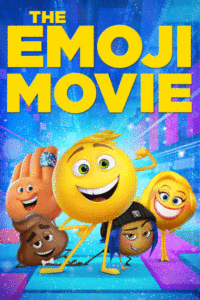Netflix’s Impact on the Entertainment Industry
Published on February 16, 2018, at 1:15 p.m.
by Alana Doyle.
Remember when television shows and movies were only available at a certain time and disappeared soon after? The arrival of Netflix changed the game in the entertainment industry.

The draw
With more than 117 million streaming subscribers worldwide, Netflix has become one of the fastest growing entertainment providers in existence. Our society has developed a dependency on the always-available streaming service that allows consumers to watch what they want, when they want, as many times as they want.
Whether people want to watch new movie releases, old classic TV shows or binge “The Office” for the 20th time, this is all possible on one platform. According to a press release by Netflix, members watched a total of 140 million hours per day in 2017. What has the world come to?
The response
Following the site’s spike in popularity, television ratings and movie attendance dropped significantly. In order to compete with Netflix and similar companies like Hulu, Amazon and YouTube, TV broadcast corporations are aiming to offer streaming abilities to users on separate websites.

In August of 2017, Disney announced that in 2019 the company will pull all content from Netflix in order to launch its own direct-to-consumer streaming platform. Disney also plans to launch a livestreaming service for the company’s sports property, ESPN. Will other entertainment leaders follow the same path in years to come?
Due to recent standard changes in the industry, there has been a shift in cinematic publicity efforts. In order to encourage consumers to make it to the box office, the content needs to be more compelling. Entertainment publicity teams must do things differently in order to encourage engagement despite unlimited access to at-home content.

From partnerships to digital promotion to live events and press junkets, publicists are forced to be innovative when developing promotional strategies and tactics. For example, Sony’s “The Emoji Movie“ centered its campaign around the fourth annual World Emoji Day. The entire month of July was jam-packed with a variety of promotional tactics in support of the premiere on July 28, 2017.
In an effort to reach consumers right at their fingertips, Sony’s team targeted its audience through popular apps. Through a partnership with Facebook, the social media platform developed 16 new emojis for the site based off the movie. In addition, Snapchat also launched an emoji lens, which allowed users to pose as different characters. Candy Crush, a popular video game, even had a new challenge for users inspired by the movie.

Following the worldwide premiere of “Fifty Shades Freed” on Feb. 9, 2018, the movie quickly hit #1 in the box office. On top of developing brand loyalty to the series, the publicity and digital teams clearly defined their target audience with social media posts, such as “Spend your Galentine’s Day with Mr. Grey.” In addition, the lead actors in the film have been traveling around the country on a press tour to promote the recently released film.
Encouraging consumers to hit the theaters for movie premieres has become increasingly more difficult over recent years. Therefore, traditional entertainment publicity teams must develop content that entices target audiences to leave their unlimited streaming services to hit the box office. So far, it seems as though companies are up for the challenge and ready to evolve.




